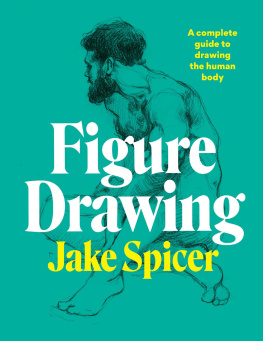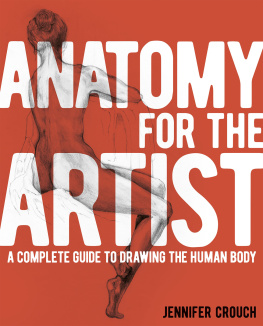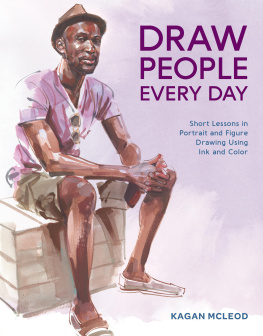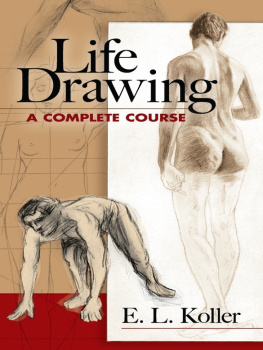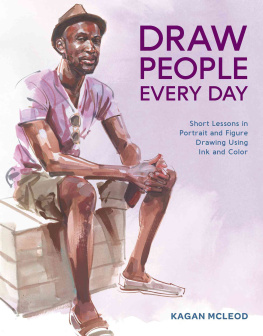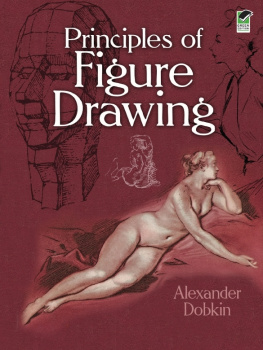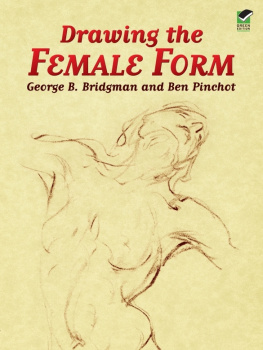DRAWING
FOR ART STUDENTS
AND ILLUSTRATORS
BY
ALLEN W. SEABY
UNIVERSITY COLLEGE, READING.
Copyright 2013 Read Books Ltd.
This book is copyright and may not be reproduced or copied in any way without the express permission of the publisher in writing
British Library Cataloguing-in-Publication Data
A catalogue record for this book is available from the British Library
Drawing and Illustration
Drawing is a form of visual art that can make use of any number of drawing instruments, including graphite pencils, pen and ink, inked brushes, wax colour pencils, crayons, charcoal, chalk, pastels and various kinds of erasers, markers, styluses, metals (such as silverpoint) and even electronic drawing. As a medium, it has been one of the most popular and fundamental means of public expression throughout human history as one of the simplest and most efficient means of communicating visual ideas.
Drawing itself long predates other forms of human communication, with evidence for its existence preceding that of the written word demonstrated in cave paintings of around 40,000 years ago. These drawings, known as pictograms, depicted objects and abstract concepts including animals, human hands and generalised patterns. Over time, these sketches and paintings were stylised and simplified, leading to the development of the written language as we know it today. This form of drawing can truly be considered art in its purest sense the basic forms on which all others build.
Whilst the term 'to draw' derives from the Old English dragan (meaning 'to drag, draw or protract'), the word 'illustrate' derives from the Latin word illustratio, meaning 'enlighten' or 'irradiate'. This process of 'enlightenment' is central to drawing and illustration as we know it today. Medieval codices' illustrations were often called 'illuminations', designed to highlight and further explain important aspects of biblical texts. This was the most general form of illustration; hand-created, individual and unique. This changed in the fifteenth century however, when books began to be illustrated with woodcuts most notably in Germany, by Albrecht Drer.
The first creative impulses of a painter or sculptor are commonly expressed in drawings, and architects and photographers are commonly trained to draw, if for no other reason than to train their perceptual skills and develop their creative potential. Initially, artists used and re-used wooden tablets for the production of their drawings, however following the widespread availability of paper in the fourteenth century, the use of drawing in the arts increased. During the Renaissance (a period of massive flourishing of human intellectual endeavours and creativity), drawings exhibiting realistic and representational qualities emerged. Notable draftsmen included Leonardo da Vinci, Michelangelo and Raphael. They were inspired by the concurrent developments in geometry and philosophy, exhibiting a true synthesis of these branches a combination somewhat lost in the modern day.
Figure drawing became a recognised subsection of artistic drawing in this period, despite its long history stretching back to prehistoric descriptions. An anecdote by the Roman author and philosopher Pliny, describes how Zeuxis (a painter who flourished during the 5th century BCE) reviewed the young women of Agrigentum naked before selecting five whose features he would combine in order to paint an ideal image. The use of nude models in the medieval artist's workshop is further implied in the writings of Cennino Cennini (an Italian painter), and a manuscript of Villard de Honnecourt confirms that sketching from life was an established practice by the thirteenth century. The Carracci, who opened their Accademia degli Incamminati (one of the first art academies in Italy) in Bologna in the 1580s, set the pattern for later art schools by making life drawing the central discipline. The course of training began with the copying of engravings, then proceeded to drawing from plaster casts, after which the students were trained in drawing from the live model.
The main processes for reproduction of drawings and illustrations in the sixteenth and seventeenth centuries were engraving and etching, and by the end of the eighteenth century, lithography (a method of printing originally based on the immiscibility of oil and water) allowed even better illustrations to be reproduced. In the later seventeenth and eighteenth centuries, the previous combination of the arts and sciences in drawing gave way to a more romantic and even classical style, epitomised by draftsmen such as Poussin, Rembrandt, Rubens, Tiepolo and Antoine Watteau. Mastery in drawing was considered a prerequisite to painting, and students in Jacques-Louis David's Studio (a famed eighteenth century French painter of the neo-classical style), were required to draw for six hours a day, from a model who remained in the same pose for an entire week!
During this period, an increasingly large gap started to emerge between 'fine artists' on the one hand, and 'draftsmen' / 'illustrators' on the other. This difference became further complicated with the 'Golden Age of Illustration'; a period customarily defined as lasting from the latter quarter of the nineteenth century until just after the First World War. In this period of no more than fifty years the popularity, abundance and most importantly the unprecedented upsurge in quality of illustrated works marked an astounding change in the way that publishers, artists and the general public came to view artistic drawing. Arthur Rackham, Walter Crane, John Tenniel and William Blake are some of its most famous names. Until the latter part of the nineteenth century, the work of illustrators was largely proffered anonymously, and in England it was only after Thomas Bewicks pioneering technical advances in wood engraving that it became common to acknowledge the artistic and technical expertise of illustrators. Such draftsmen also frequently used their drawings in preparation for paintings, further obfuscating the distinction between drawing/painting, high/low art.
The artists involved in the Arts and Crafts Movement (with a strong emphasis on stylised drawing, and a powerful influence on the 'Golden Age of Illustration') also attempted to counter the ever intruding Industrial Revolution, by bringing the values of beautiful and inventive craftsmanship back into the sphere of everyday life. This helped to counter the main challenge which emerged around this time photography. The invention of the first widely available form of photography (with flexible photographic film role marketed in 1885) led to a shift in the use of drawing in the arts. This new technology took over from drawing as a superior method of accurately representing the visual world, and many artists abandoned their painstaking drawing practices. As a result of these developments however, modernism in the arts emerged encouraging 'imaginative originality' in drawing and abstract formulations. Drawing was once again at the forefront of the arts.
There are many different categories of drawing, including figure drawing, cartooning, doodling and shading. There are also many drawing methods, such as line drawing, stippling, shading, hatching, crosshatching, creating textures and tracing and the artist must be aware of complex problems such as form, proportion and perspective (portrayed in either linear methods, or depth through tone and texture). Today, there are also many computer-aided drawing tools, which are utilised in design, architecture, engineering, as well as the fine arts. It is often exploratory, with considerable emphasis on observation, problem-solving and composition, and as such, remains an unceasingly useful tool in the artists repertoire.




